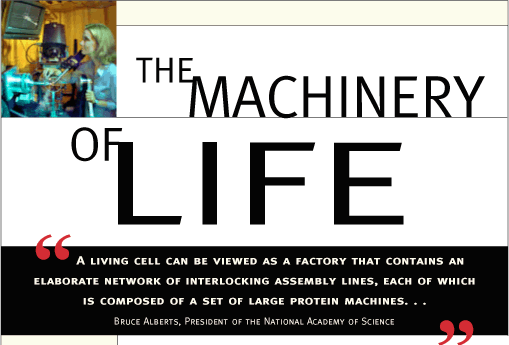 |
 |
|
MAGINE
AN INNOCULATION FOR THE CURING
of cancer, Alzheimer's disease, or AIDS. Imagine replacements for
a damaged organ, such as a liver, a lung, or a kidney, being grown
from a patient's own cells. Imagine an injection that regenerates
the damaged tissue of a heart or a brain. How about vaccines that
counteract the ravages of aging, or foods that counteract the effects
of diabetes, high cholesterol, or hepatitis B? Welcome to the future
of protein design and engineering, a world in which the biological
machinery that shapes living cells and controls the chemical reactions
which make those cells work is retooled, refitted, repaired or replaced
for optimal performance. To reach this future, scientists will first
have to learn a great deal more about the structure and function of
proteins. The federal government recently launched the "Protein Structure
Initiative," a logical sequel to the Human Genome Project but perhaps
an even larger, more ambitious undertaking. What has made this initiative
a realistic consideration is the combination of powerful
new computational tools and a new generation of imaging resources
such as the Macromolecular Crystallography Facility at Berkeley Lab's
Advanced Light Source. |
|

